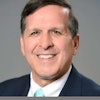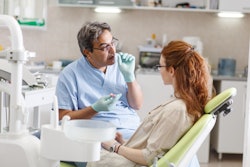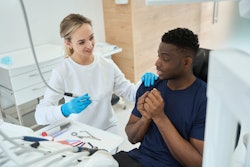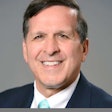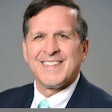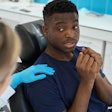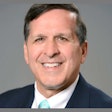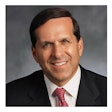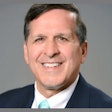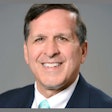Are you making your patients feel like eavesdroppers? At least one patient recently asked Miss Manners if she was in the wrong for laughing while in the dentist's chair after hearing a private conversation between a dentist and hygienist.
Miss Manners and dental experts say she wasn’t. Also, experts told DrBicuspid it’s critical to strike a balance in practices by maintaining a pleasant, collaborative work environment among team members while keeping personal chatter to a minimum to maintain a professional atmosphere.
Here’s what the experts had to say.
Dr. Michelle Jorgensen, a holistic dentist, treats her practice like the theater.
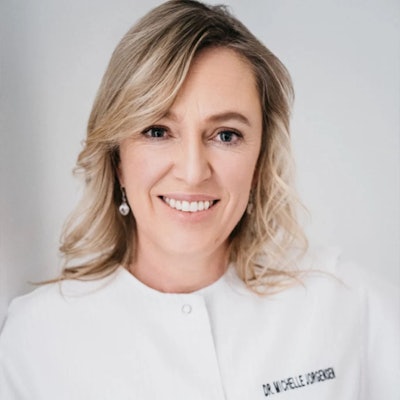 Dr. Michelle Jorgensen.Living Well With Dr. Michelle Jorgensen.
Dr. Michelle Jorgensen.Living Well With Dr. Michelle Jorgensen.
“In our office, we live by the ‘offstage/onstage’ principle,” Jorgensen said. “The moment we’re within earshot or eyesight of a patient, we’re ‘on stage,’ meaning every word, tone, and gesture should reflect professionalism, respect, and warmth. Team members are trained to save personal conversations for break rooms -- out of patient view. During treatment, chairside conversation should include the patient, even if they can’t easily respond. Instead of chatting over them, we pull them into the discussion.”
Jorgensen added that she learned this lesson the hard way years ago, saying, “I was working with a temp assistant I knew socially, and we made a lighthearted comment about someone’s heavy makeup. The patient shook her head and tsk-tsked us -- rightly pointing out it was unprofessional. I immediately apologized, told her it was inappropriate for work, and made a mental note to never repeat that mistake. If a patient overhears something that crosses a line, address it right away with a sincere apology, then turn it into a teaching moment for the team. Patients trust us not only with their health but also with their comfort and dignity, and that includes the atmosphere we create around them. If they hear you speaking inappropriately about someone else, they can’t help but wonder what you might say about them when they’re not there.”
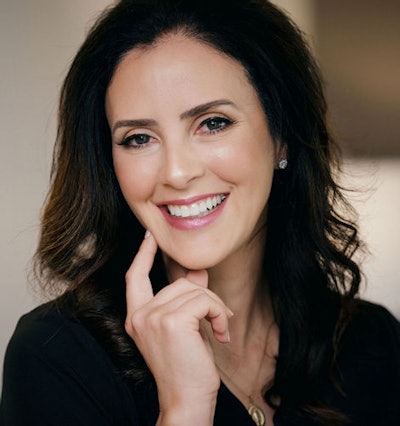 Dr. Daniela Eversgerd.Allure Dental.
Dr. Daniela Eversgerd.Allure Dental.
Dr. Daniela Eversgerd, the founder of Allure Dental in Mandeville, LA, said, "In my practice, we encourage genuine warmth and connection. It’s what makes our office feel inviting to both patients and team members. That said, I have clear boundaries around professional communication during patient hours. I remind my team that patients deserve our full attention and that every conversation in the operatory is part of their experience. Sometimes I’ll share something lighthearted, like a funny story about my kids or something that happened to me, but I always involve the patient, so the focus remains on them. We keep workplace chatter positive and brief, saving more personal conversations for lunch breaks or after hours. This way, the culture stays collaborative and fun, but the patient always comes first.”
If a patient does overhear something that wasn’t for his or her ears, Eversgerd said, “I address it with warmth: a simple acknowledgment such as, ‘I’m sorry, we got a little carried away -- our focus is on you.’ Redirecting the conversation shows respect and immediately reassures them that their care is our priority. We’re also very mindful of the patient’s energy. Some enjoy conversation, while others prefer to simply relax and tune out. We pay attention to those cues so we can create more of a spalike experience when that’s what the patient needs. Many of my patients love putting on noise-canceling headphones and watching Netflix during treatment, which creates a true spalike experience when that’s what they need."
Dr. Jeremy Manuele, of VegasOrthoDoc.com, believes great care is about what patients hear as much as what we do.
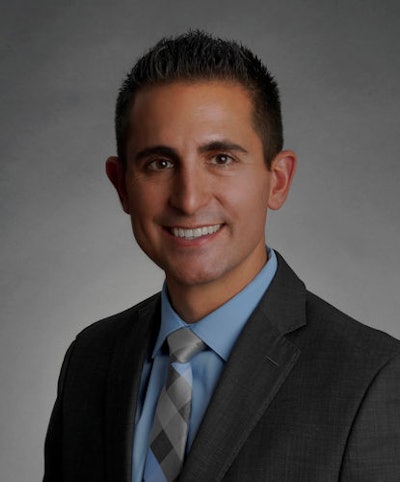 Dr. Jeremy Manuele.Orthodontic Clinical Education Corp.
Dr. Jeremy Manuele.Orthodontic Clinical Education Corp.
“It’s important for our teams to enjoy working together -- that energy and positivity are contagious,” Manuele said. “But personal conversations can sometimes drift too far, and that’s when patients may feel like they’re eavesdropping instead of being cared for. The easiest way to check ourselves is with a simple rule: If you wouldn’t feel comfortable saying it directly to the patient in the chair, it probably doesn’t belong in the operatory conversation.”
At the end of the day, everything in dentistry comes down to relationships and connections, Manuele said.
“Patients come to us not only for technical skill but also for how we make them feel while they’re in the chair,” Manuele said. “If we keep that perspective front and center, the balance between team camaraderie and patient focus naturally falls into place.”
Dr. Kami Hoss, an orthodontist and co-founder of The Super Dentists in California, said it’s all about creating a positive environment combined with professional boundaries and leadership.
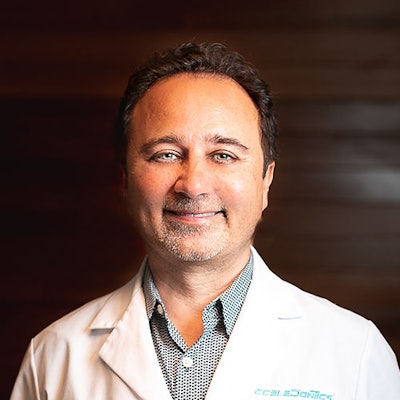 Dr. Kami Hoss.Dr. Kami Hoss.com.
Dr. Kami Hoss.Dr. Kami Hoss.com.
“In my practices, we work hard to create a warm, collaborative atmosphere where the team enjoys working together, because patients can feel that energy,” Hoss said. “But there’s a difference between friendly and overly personal. We keep our conversations light, relevant, and professional while we’re with patients. Small talk is fine, even welcome, but it should never drift into private matters that make the patient feel like an eavesdropper.”
Hoss added, “Culture starts at the top. We make sure our team understands that when a patient is in the chair, they are the center of attention. We can catch up with each other before or after clinical time, but during appointments, the focus should always be on the patient’s comfort, care, and experience.”
Additionally, Hoss said to remember that the patient comes first.
“If we sense a patient has overheard more than they should (maybe they chuckled or shifted in their seat), we try not to make it awkward with a big apology,” Hoss said. “We would usually give them an easy out, like offering them a quick rinse or checking on their comfort. That subtle reset keeps the mood light while steering the conversation back to them.”
Dr. Sandip Sachar of Sachar Dental in New York City reminds her staff to treat patients the same as guests visiting for dinner.
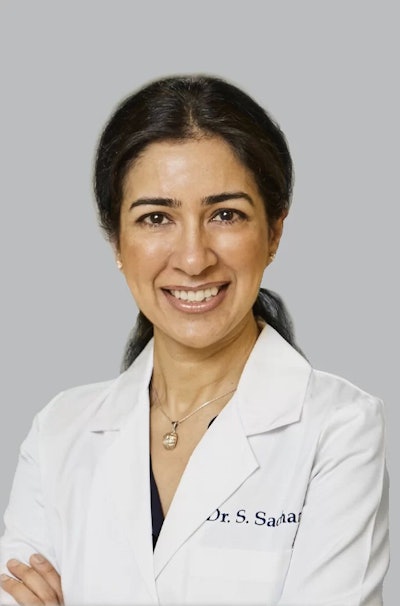 Dr. Sandip Sachar.Sachar Dental NYC
Dr. Sandip Sachar.Sachar Dental NYC
“Would you talk to each other and leave the guest out?” Sachar asked. “We all know how we would treat guests we invited over for dinner. Follow the same rules of courtesy. It's that simple.
In my practice, there’s no personal small talk or 'chatting' over the patient. When instruments are in the patient’s mouth, the only conversation is checking on their comfort and explaining what’s happening (if they’re interested). When instruments are out, any conversation includes the patient and is often about them, not us.”
Dr. Royce Lai, of King Village Dental in Ontario, Canada, said it’s important for businesses to establish rules defining appropriate and inappropriate conversations.
 Dr. Royce Lai.Huntsville Family Dentistry/Facebook.
Dr. Royce Lai.Huntsville Family Dentistry/Facebook.
“Staff should undergo training that shows them why they shouldn't chat about personal things while patients, clients, or customers are nearby,” Lai said. “This should be reiterated occasionally, as people tend to let their guards down.”


